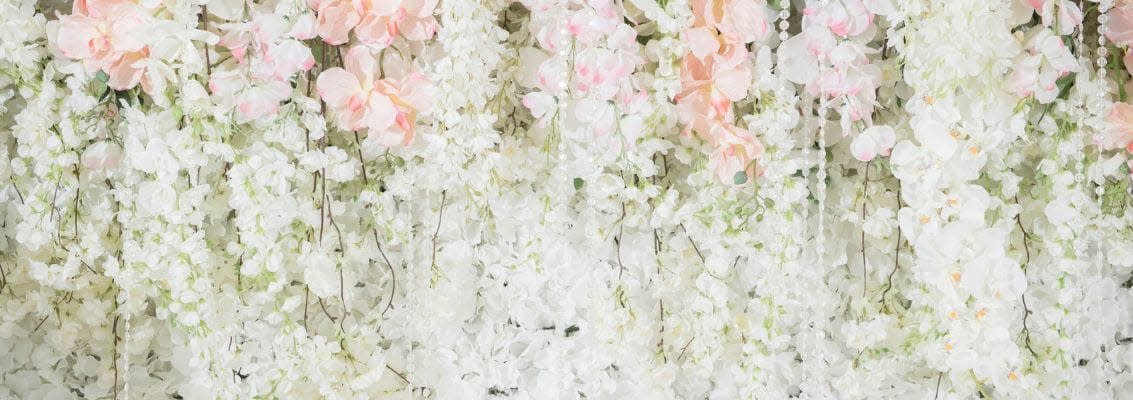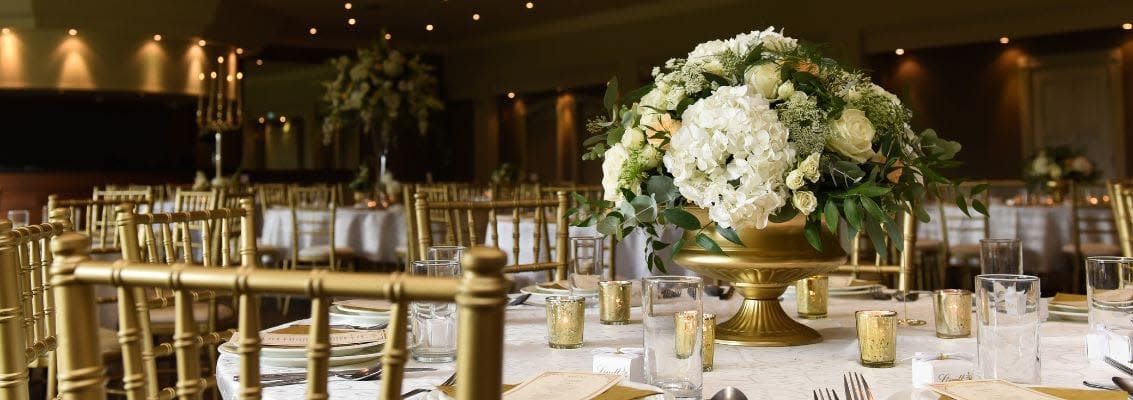Spring is on the way and the flowers will soon be blooming. From bouquets to boutonnières to table arrangements, even petals tossed down the aisle, flowers have long been part of the wedding tradition. But there is a story—sometimes passionate, sometimes tragic—behind the beauty of flowers.
According to ancient lore, floral arrangements have formed an integral part in weddings as far back as the ancient Greeks, Romans and Egyptians, who used floral arrangements to ward off bad luck and evil spirits during nuptials.
In Greece, an annual spring flower festival honored Dionysus, god of fertility, wine, fruit and ecstasy, while the ancient Romans held a flower festival in early May to honor Flora, goddess of flowers.
Generally, it was believed that flowers signaled a new beginning, sure to guarantee happiness, fertility and even fidelity.
During the Middle Ages, bathing was not necessarily a trend, but the sweet smell of flowers helped mask body odor and any lingering scent from the Bubonic Plague.
Later, the Elizabethan era found decorative floral arrangements sprouting up in small bridal bouquets. Fashionable brides even started going as far as tucking matching flowers into their elaborate hairstyles, a daring deed during that “prim and proper” period of history.
By the Victorian Age, bridal bouquets were standard fare with the need to ward off evil spirits or foul odors fortunately a dim memory. Many brides, however, chose to convey their loving feelings with a specific flower, such as a red rose. Dahlias were believed to convey the thought, “I’m yours forever,” and it is believed that they were used to mark the strong commitment between lovers during that period.
Throughout history the symbolism of flowers in literature and legends revealed a whole new language and today, flowers maintain an important place in our lives, especially at weddings, but some of the myths, which have sprung up around them are fascinating, many, stemming from Greek and Roman mythology.

Calla Lily
Derived from the Greek word, calla, meaning “beautiful,” this flower is associated with the goddess Hera. According to legend, Zeus was unfaithful and had his son, Hercules, with his mistress. When he took his newborn baby to his sleeping wife, Hera, to nurse from her bosom, she pushed him away. Drops of her milk apparently few across the sky, creating the Milky Way, while anything falling to the ground grew into beautiful lilies. Apparently, Venus, Roman goddess of love, beauty and desire was so jealous of the lilies’ beauty that she cursed them by placing a large, yellow pistil in the middle of each one. Because of this, the calla lily is often associated with lust and jealousy.

Carnation
One of the oldest cultivated flowers since Greek and Roman times, carnations are typically associated with love. According to some legends, Greek botanist Theophrastus named it “dianthus,” meaning, “divine flower,” and it was used in ceremonial crowns. Roman legend claims that the flower first appeared when Mary cried at her son Jesus’ crucifixion, claiming that the pink flowers grew on the spot where her tears fell.

Daffodil
One of ancient Greece’s most popular mythological flowers, the daffodil, stems from the handsome Narcissus, the legendary “bad boy” who was cursed to fall in love and be obsessed with himself because of his selfishness and ignorance. After rejecting a nymph named Echo and breaking her heart, Nemesis, goddess of revenge, punished him and made him fall in love with his own reflection. The “narcissus flower,” which suddenly budded in his place was renamed daffodil becoming a sign of unrequited love.

Hyacinthus
Yet another incredibly handsome figure in Greek mythology, Hyacinthus, had his choice of suitors. One day, while having a friendly game of discus with Apollo, he was accidentally killed. The grieving Apollo refused to let the underworld god, Hades, take his soul so he transformed Hyacinthus into the Hyacinth flower.

Peony
Greek lore relates that the powerful god Apollo was enamored of an exceptional beauty named Paeonia. Unfortunately, Aphrodite was not pleased with this attachment and flew into a jealous rage, turning the young beauty into a red peony. Apparently Paeonia blushed when she was caught flirting and that’s why peonies have since symbolized bashfulness.

Rose
There are several versions of how the rose became a symbol of love, but one of the most popular has been attributed to Aphrodite, goddess of love and beauty, who came across her incredibly handsome mortal lover, Adonis, after he had been gored by a wild boar. He allegedly died in her arms while she wept and her tears combined with his blood to produce a beautiful red rose bush, which she named after her son, Eros and became a symbol of love until death. If you scramble the letters of Eros’ name, it spells rose.
Modern-day wedding parties have left those legends and worries, tailoring florals to the décor of their dreams. But just in case, it might be wise not to anger any Greek or Roman gods while you’re making your selection.
Learn more about Destinations Weddings by ALHI and subscribe to our newsletter.